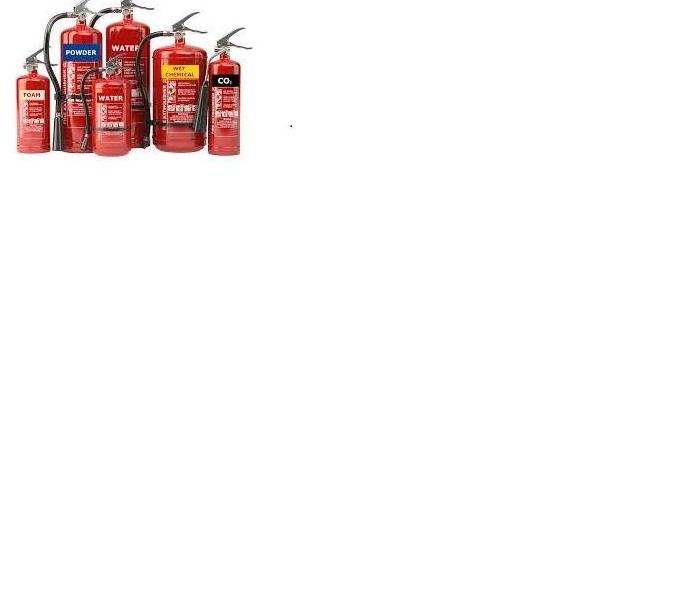Fire Extinguisher 101
8/7/2019 (Permalink)
Not only is it smart to keep fire extinguishers in your home or business, it’s also the law in many states.
It's important to make sure you have the right types of fire extinguishers on hand to put out common fires.
Getting started with fire extinguishers
The first thing to do when choosing a fire extinguisher is to decide which rooms in your house need one. You should keep at least one on each level of your house. Make sure you keep fire extinguishers handy where fires are more likely to start, like in the kitchen and garage.
Understanding fire extinguisher classes
There are four classes of fire extinguishers – A, B, C and D – and each class can put out a different type of fire.
- Class A extinguishers will put out fires in ordinary combustibles such as wood and paper
- Class B extinguishers are for use on flammable liquids like grease, gasoline and oil
- Class C extinguishers are suitable for use only on electrically energized fires
- Class D extinguishers are designed for use on flammable metals
Multipurpose extinguishers can be used on different types of fires and will be labeled with more than one class, like A-B, B-C or A-B-C.
Purchasing your fire extinguisher
Now that you know how many extinguishers you need and what types to get, you can head to the hardware store. Look for fire extinguishers that you can easily lift. Larger extinguishers may pack more power, but you must be able to use it properly.
Learning how to use your fire extinguisher
Once you've made your purchases, familiarize yourself with the fire extinguisher directions so you’ll be prepared in case you need to put out a fire. Typically, fire extinguishers are easy to use in the case of a fire. Most of the types operate using the P.A.S.S. technique:
- Pull the pin on the fire extinguisher to break the tamper seal.
- Aim the fire extinguisher low, with the nozzle pointed at the base of the fire.
- Squeeze the handle of the fire extinguisher to release the extinguishing agent.
- Sweep the nozzle from side to side while pointed at the base of the fire until it is extinguished.
- If the fire re-ignites, repeat the last 3 steps.
Have Questions about Fire, Smoke, or Soot Damage?
Call Us Today – SERVPRO of Gainesville 770-536-1010

 24/7 Emergency Service
24/7 Emergency Service
